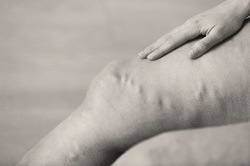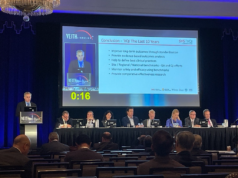 The SVS, in collaboration with the American Venous Forum (AVF) and the American Vein and Lymphatic Society (AVLS), has unveiled part two of the clinical practice guidelines for the management of varicose veins of the lower extremities. Building upon the foundation laid by part one, which was published online in October 2022, this latest installment offers evidence-based guidance to healthcare professionals and patients navigating the complexities of varicose vein care.
The SVS, in collaboration with the American Venous Forum (AVF) and the American Vein and Lymphatic Society (AVLS), has unveiled part two of the clinical practice guidelines for the management of varicose veins of the lower extremities. Building upon the foundation laid by part one, which was published online in October 2022, this latest installment offers evidence-based guidance to healthcare professionals and patients navigating the complexities of varicose vein care.
The new guidelines, endorsed by the Society of Interventional Radiology and the Society for Vascular Medicine, were published in the Journal of Vascular Surgery-Venous and Lymphatic Disorders in September, and are set to become a trusted resource for medical practitioners and individuals seeking effective varicose vein management strategies, according to co-primary author of the guideline writing group, Peter Gloviczki, MD.
SVS clinical practice guidelines are rooted in an evaluation of scientific literature, weighing the likely benefits and potential harms of various treatments.
The guideline writing group utilizes systematic reviews to distill key recommendations from the vast body of available evidence, ensuring that these guidelines remain both current and reliable.
Gloviczki emphasized the trustworthiness of the guidelines, stating, “These guidelines offer the most current and reliable source of information for both patients and healthcare providers.”
The guidelines address critical issues concerning the management of lower-extremity varicose veins, using the PICO (patients, interventions, comparators and outcomes) framework to provide evidence-based answers to crucial questions.
Part I focused on the role of duplex ultrasound scanning in evaluating varicose veins and treating superficial truncal reflux. Part II delves into several aspects, including the prevention and management of varicose vein patients with compression, treatment with venotonic drugs and nutritional supplements. It also covers the evaluation and treatment of varicose tributaries, superficial thrombophlebitis, venous aneurysms and the management of complications associated with varicose veins and their treatment.
The guidelines place emphasis on incorporating contemporary endovascular venous interventions, both thermal and non-thermal procedures, aligning them with compression therapy and pharmacological treatment for managing varicose veins.
The document encompasses a wide range of recommendations spanning parts I and II, ungraded consensus statements, pragmatic implementation notes and best-practice directives. It provides guidance for the appropriate management of patients with symptomatic lower-extremity varicose veins.
“When evaluating patients for varicose veins and conducting duplex ultrasounds, it is important that all physicians use the CEAP (Clinical-Etiological- Anatomical-Pathophysiological) classification system.
All patients with varicose veins C2 disease should have duplex ultrasound evaluations to evaluate the reflux in the saphenous veins and other superficial veins. This exam should be performed with the patient standing, whenever possible,” said Gloviczki.—Marlén Gomez











